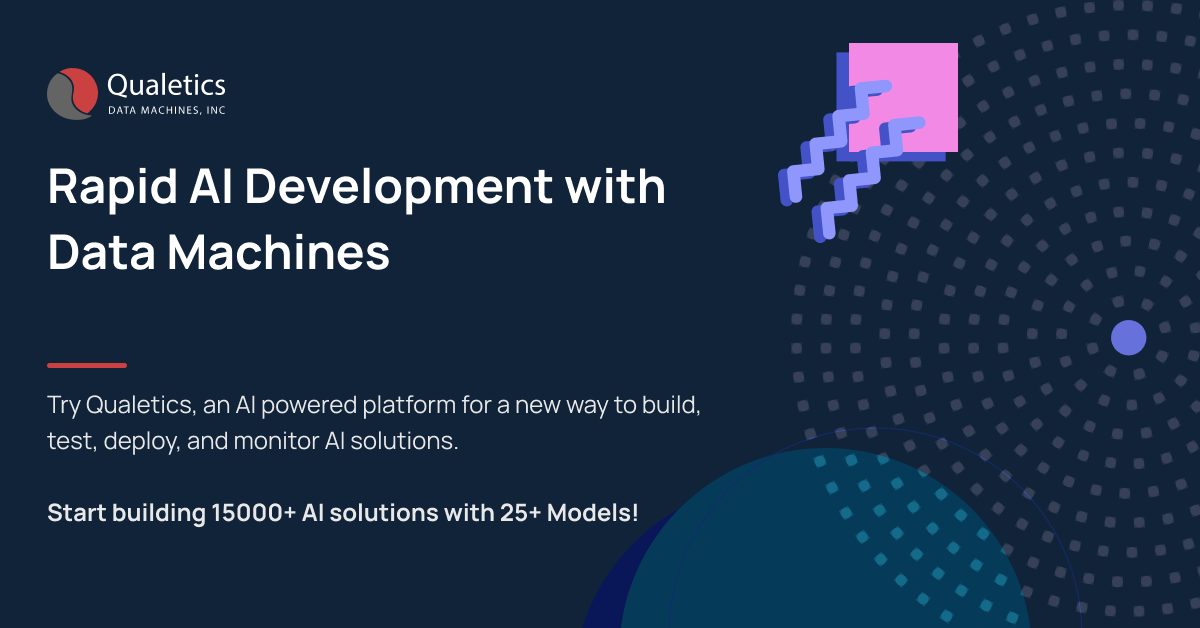How AI & Customer Experience Testing Improves Software Quality
Software quality and customer experience testing relate because they go hand in hand. Both are related to the quality of a product while coming from different perspectives but resulting in the same goal: a high-quality product. Quality software and positive customer experience both result from learning what users want, need, and expect by developing a clear understanding of project requirements prior to implementation.
What Is Software Quality?
Software quality is a measure of the fitness of software products for their purpose. It is a measure of completeness, correctness, and reliability. Software quality may be measured using a variety of metrics or qualities, including:
- Functionality – how effectively is the software able to achieve its stated purpose?
- Usability – How easy the software is to use?
- Reliability – how consistently does the software behave in terms of performance and stability?
- Maintainability – how easy is it to modify or fix the software?
- Efficiency – how well is the software able to deliver the results it’s meant for consistently for all its users without unnecessary steps?
- Portability – how easily can the software be moved to other environments?
- Security – how secure is the software from attack and misuse?
What Is Customer Experience Testing?
Customer experience testing or CX testing as it is sometimes called involves putting yourself in the shoes of a customer. Customer experience testing is the use of digital tools to simulate the customer journey through a software, app, or website by performing tasks, such as making purchases, browsing products, and sharing information. When you perform customer experience testing, you are creating an environment where you can test ideas and gather data about your customers’ interactions with your site. You can then use the results to improve the experience of your software.
Tests can be performed manually with a script or automatically with software that simulates the actions of real people. Whether using manual or automated tests, you’ll likely need a variety of tools, including screen capture software for recording what visitors see on your site, heat mapping software for determining where they click, and analytics software that provides information on how visitors engage with your site.
Why Is Customer Experience Testing Important?
With the increased adoption of digital platforms over the last few years, the usage of software has significantly increased but so have the expectations of quality from its users. Such expectations put a high degree of emphasis on the quality of software and in many cases, the quality of a software product is determined by how well it is able to provide a good customer experience to the users. Customer experience determines whether customers will buy your product and/or recommend it to others. Your customers care about how well you understand and solve their problems, how easy it is to do business with you, how quickly and accurately you respond to their needs, how pleasant you are to deal with, and many other factors. Most, if not all of the aspects mentioned above are now being handled digitally in many businesses which brings us back to the aspect of the user’s experience and how well they are being handled. To put it mildly, they want an excellent experience.
Why Customer Experience Must Drive Your Software QA Strategy?
Quality software and customer experience testing is the foundation of your business, so you need a strategy for ensuring that your customers have the best possible experience. You also need a strategy for ensuring that your software remains high quality on an ongoing basis.
When developing your software testing strategy, you need to know what your customer experience needs to look like at the end of the project. This will help you prioritize various tests, which can have a huge impact on the quality of your software products.
You can start small and grow your software QA strategy as you go along. The most important thing is to start testing right away and integrate testing into your culture. Here are five tips for integrating quality and customer experience testing into your organization:
- Get everyone involved — QA experts and developers — in the process of improving the quality of software.
- Use data to drive decisions.
- Use automation to save time and money.
- Meet regularly with stakeholders to discuss how to improve quality in your organization.
- Keep it simple- start small and grow big.
Customer Experience Testing Methods
There are a variety of methods for Customer Experience Testing. Some of the popular CX Testing methods include:
- Usability Testing: This is done by getting a group of people together and giving them scenarios to run through to determine their ease of use of the experience.
- Heuristic Evaluation: This involves having an outside party look at the design and determine areas where there is room for improvement. A heuristic evaluation looks at how easily users can achieve tasks within the experience. It’s based on the idea that if users have trouble with something, they aren’t going to be inclined to use it.
- Surveys/Questionnaires: You can get feedback directly or indirectly through surveys or questionnaires. These can go out before a launch or afterward to gather feedback after a launch. They can also be sent out randomly or prompted by certain events.
- A/B Testing: This is one of the most popular methods for testing because you can actually change things in real-time and see how they affect metrics like conversion rate (how many people take action) and average order value (how much money people spend).
Customer Experience Testing Challenges
Here are key challenges faced by organizations when it comes to customer experience testing:
- Lack of insight into what people are actually experiencing across a wide range of touchpoints while using your product.
- High cost of deploying research and analytics teams.
- Risk of biased data collection (i.e., knowing who you surveyed impacts how they respond)
- Inability to capture real-time data.
- Inability to detect qualitative information like happiness and engagement.
- Inability to track how an individual customer interacts with the software.
The traditional methods of customer experience testing are complex, time-consuming, and expensive. Today’s technology provides an opportunity to build scalable solutions that provide the insights necessary to continuously improve the customer experience.
How AI Can Help in Customer Experience Testing
To begin with, AI can be used to perform thousands of tests at a time, and across a wide variety of channels and devices. Traditional CX testing methods can never cover the same breadth of options.
AI can be used to analyze a huge amount of data at once, allowing companies to improve their CX. This can be done by monitoring customer behavior on your software, app, or website, flagging up common issues or problems and then taking action accordingly. You can also use AI to monitor social media channels and identify customer sentiments and complaints before they escalate.
You can use AI to create customer experience tests that analyze demographic data and survey responses to determine how well your product is actually performing. AI will also give you more accurate results since it can analyze a much larger set of data than any human could.
Customer Experience Testing is especially useful for software that is still in the development phase or for novel products or technologies. You can use the information gathered from these tests to improve your website or product before it even goes public. Here’s how it works: You provide AI with information about your audiences, such as demographic data and survey responses. AI then analyzes this data using machine learning algorithms to identify patterns and make predictions about customer behavior. Once the predictions have been made, they can be tested against real customer behavior to gather more data and refine future predictions.
Qualetics – An AI-Powered CX Testing Tool
Whether you’re working in a large enterprise or a small business, you’ll want to implement customer experience testing (CET) software that can scale as your business grows. You’ll need a system that allows you to easily import new data and test new scenarios as your business changes over time. The best CET platform offers flexible deployment options capable of working alongside existing infrastructure to streamline the integration process while reducing strain on IT resources. That way, you can start small and grow at your own pace without having to make major changes down the road.
We have developed Qualetics AIMS with the above considerations and more in mind. Qualetics AIMS is an all-in-one analytics platform that provides you with Software Quality Analytics along with User Behavior Analytics, Product Analytics, Embedded AI features, and more, to give you a 360-degree view on the software quality as well as the customer experience. Powered by AI, it helps you collect large volumes of data from multiple sources and processes, as the users engage with your software, process it in real-time, and deliver actionable insights. To learn more about our Software QA platform and how it can help you in improving customer experience, contact us here.


